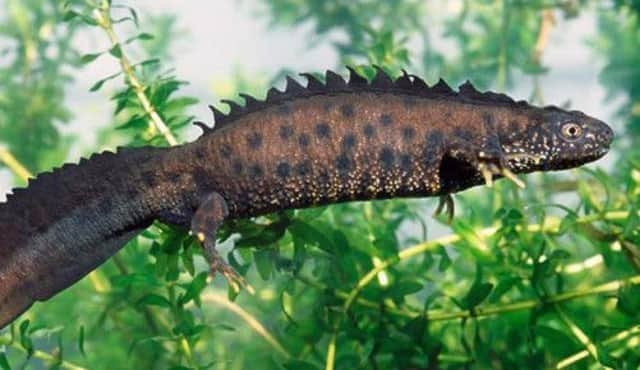Great crested newts native to Scottish Highlands


Experts had previously assumed that the newts had been introduced into the Highlands from other parts of the UK.
The great crested newts which live in the Scottish Highlands can be found in the inner Moray Firth and Inverness area – but are separated by more than 80km of unfavourable habitat from the main areas where the newts live in Central Scotland, so most assumed that they were introduced into the north of Scotland.
Advertisement
Hide AdAdvertisement
Hide AdBut work by SNH staff and local enthusiasts suggested that some of these groups might actually be native.
As a result, SNH commissioned internationally-recognised authority, Dr Robert Jehle of Salford University, to use DNA fingerprinting to find out if great crested newts are native to the Scottish Highlands.
He and his team looked at eight populations from the Highlands and compared their DNA with two reference populations from the northern limits of their more continuous UK distribution in Central Scotland.
The study showed that great crested newts are almost certainly native to the region.
The research also showed that the Highland newts are genetically distinct from those in central Scotland. This may be the result of the Highland population being isolated from the rest of the British population about 3,000 years ago.
There are fewer than 150 known places across the whole of Scotland where these shy animals live, with 30 of these sites in the Highlands.
The great crested newt has declined across its European range and is very rare across Scotland. It’s the rarest of three newt species native to Britain.
David O’Brien of SNH said: “A number of us suspected the great crested newts were native to the Highlands, and we’re thrilled to find that this hunch was right.
Advertisement
Hide AdAdvertisement
Hide Ad“It’s important to know the newts’ origins, as they’re rare and protected nationally and internationally. This research gives even more reason to conserve the small, unique populations of great crested newts in the Highlands.”
Dr Robert Jehle added: “I’ve greatly enjoyed working with SNH and see this as a terrific example of using science to help us better protect this rare Highlands amphibian.”